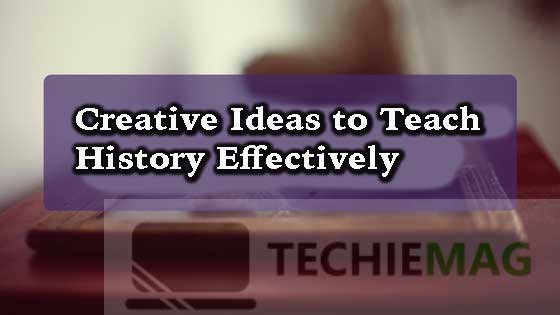An understanding of history is imperative. Students who learn from history are able to draw on past events to make better decisions for their futures. These creative ideas will bring history to life for any child.
Drama is Fun
Many historical events have an innate sense of drama. Past battles, the signing of the Declaration of Independence, the movement of people across varied frontiers — it’s all there waiting for your students to discover on their own. Kids can role-play many events that have shaped our world over time.
For example, assign one group of students the role of defending the Confederacy while another takes the side of the north. Kids can argue passionately for each side and learn something deeply important in the process. If you’re looking for other fun ideas, there are free resources available through platforms such as the Adobe Education Exchange.
Look to Primary Sources
Primary sources are some of the most important sources at your fingertips. If you’re teaching 8th grade history lessons centered on the American colonial period, ask students to examine the voices of both Native Americans and the colonists. There are many sources that let leaders in communities from the past speak to the students of today.
These are the words you students can study in order to see the world through their eyes. They can also have a chance to learn how language has evolved over time. Terms that were once commonly used have fallen out of favor. Students can study English and history in a single lesson.
Historical Fiction
Good historical fiction brings the world of the past directly into the lives of students. Authors like Laura Ingalls Wilder use vivid language that students find accessible. Kids can begin at Laura’s side as she and her family embark on a series of adventures.
They can study the differences between what Laura put on the page and what happened to her family in real life. That helps students get a feel for how history changes depending on who is telling the story. Students can also come up with fictional stories of their own. That is one way to help them separate fact from fiction.
Regional Museums
Local museums help students get a hands-on feel for the passage of time in their part of the world. This is a way that all students can learn about what it means to live in a place and how the world can change around them.
Many museums have detailed exhibitions about specific regional concerns such as the type of farming implements that were used there as well issues such as local festivals that were celebrated each year. That allows students to see what their ancestors may have done in the past right in their own backyard.
The world of history is endlessly fascinating. If you are teaching students this subject, making it fun and interesting is necessary when it comes to maintaining their attention. These are just a few of the many ways to help you get started.
Follow Techiemag for more Technology, Business, and Digital Marketing News.
Table of Contents





![[Jan 2024] EZTV Proxy | Unblock EZTV | EZTV Alternatives eztv](https://www.techiemag.net/wp-content/uploads/2020/05/eztv-300x194.png)


